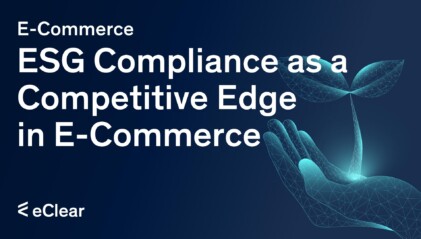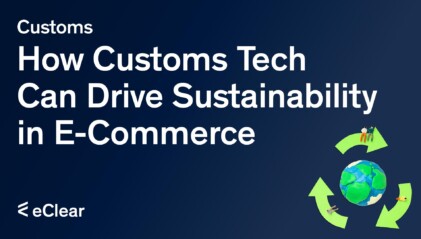ESG reporting guides companies towards sustainable success in the labyrinthine world of modern business. But what exactly are the components that make up this vital framework? Let’s dissect the three pillars of ESG:
Environmental Factors: Environmental factors reflect a company’s ecological stewardship, from greenhouse gas emissions and water conservation to waste management and renewable energy utilisation.
Social Factors: These include labour practices, employee benefits, diversity and inclusion, community engagement, and human rights. Social factors testify to a company’s ethical obligations towards its employees, customers, suppliers, and the broader community. They signify a business’s empathy, integrity, and social consciousness.
Governance Factors: Governance is the skeletal structure that holds the organisation together. It involves the system of rules, practices, and processes by which a company is directed and controlled. This includes board composition, executive compensation, shareholder rights, and transparency in financial reporting. Governance factors ensure that a company operates fairly, accountable, and transparently.
Aligning Profit, People, and Planet for Investor Trust
The role of ESG reporting in sustainable business practices cannot be overstated. It’s a holistic approach that aligns a company’s strategies with societal goals and environmental preservation. ESG reporting is not a mere checkbox exercise; it’s a continuous journey towards a responsible economy where profit does not come at the expense of people or the planet.
Investors also recognise the profound impact of ESG reporting on investment decisions. A company’s ESG performance is increasingly considered a barometer of its long-term viability and risk management. Investors are flocking towards businesses demonstrating a robust commitment to ESG principles, recognising that such companies are more likely to thrive in an ever-changing global landscape.
From Policy to Practice: The Evolution of ESG in the European Union
The European Union has long been at the forefront of sustainability and corporate responsibility. The journey towards ESG reporting in the EU is a rich tapestry woven with ambition, innovation, and regulation.
From NFRD to CSRD, A Transformative Journey
The seeds of ESG reporting were sown in the early 2000s, with various voluntary initiatives and guidelines emerging across member states. However, it was the adoption of the Non-Financial Reporting Directive (NFRD) in 2014 that marked a watershed moment. The NFRD mandated large companies to disclose information on their social and environmental impacts, human rights, and anti-corruption efforts, setting a precedent for transparency and accountability.
The introduction of the Sustainable Finance Disclosure Regulation (SFDR) in 2021 further amplified the focus on sustainability, requiring financial market participants to disclose how they integrate ESG risks and opportunities into their investment decisions.
The Taxonomy Regulation, another cornerstone, provides a classification system to define what can be considered an environmentally sustainable economic activity. It’s a compass guiding investors and companies towards a greener future.
Fast-forward to today and the landscape of ESG reporting in the EU has evolved into a complex and robust framework. On January 5, 2023, the Corporate Sustainability Reporting Directive (CSRD) entered into force, modernising and strengthening previous rules. The first companies will apply these new rules in the 2024 fiscal year, with reports published in 2025. The regulations introduced by the NFRD remain in force until companies apply the new rules of the CSRD.
Transformative Impact on Business
These regulations are not mere bureaucratic exercises but catalysts driving a profound transformation in the European business landscape. Case studies of EU-based companies reveal a vibrant picture of innovation and commitment. Whether it’s a multinational corporation aligning its operations with the Paris Agreement or a small enterprise pioneering circular economy practices, ESG reporting is shaping the very ethos of European commerce.
For example, the Danish wind energy giant Ørsted has metamorphosed from an oil and gas behemoth into a global leader in renewable energy. Or consider Unilever’s Sustainable Living Plan, a blueprint that intertwines profitability with social impact and environmental stewardship.
Challenges and Opportunities in ESG Reporting
The Challenges
Complexity of Compliance: The EU’s evolving landscape of directives and guidelines requires constant vigilance and adaptation. It’s a moving target that demands precision and agility.
Data Collection and Integrity: Gathering accurate and comprehensive data across the diverse domains of ESG is no small feat. Ensuring the integrity and reliability of this data is paramount, yet fraught with difficulties.
Integration with Business Strategy: Aligning ESG reporting with core business strategies requires a profound transformation in thinking and execution. It’s not merely an add-on but a fundamental business purpose and practice reimagining.
The Opportunities
Building Trust and Reputation: Effective ESG reporting is a beacon of trust. It signals investors, customers, and regulators that a company is committed to ethical practices and long-term sustainability.
Unlocking Investment Potential: Investors are increasingly drawn to companies that demonstrate robust ESG performance. ESG reporting is not just a moral compass; it’s a financial magnet that can attract capital and foster growth.
Driving Innovation and Efficiency: Embracing ESG principles can spur innovation and operational efficiency. It’s a catalyst for rethinking processes, products, and partnerships, unlocking new avenues of value creation.
The Role of Technology
Advanced analytics, artificial intelligence, and blockchain are revolutionising how companies approach ESG reporting.
Automation and Accuracy: Technology enables data collection and analysis automation, reducing human error and enhancing accuracy.
Real-time Insights: Sophisticated tools provide real-time insights into ESG performance, allowing for initiative-taking decision-making and continuous improvement.
Transparency and Traceability: Blockchain, in particular, offers unprecedented transparency and traceability, ensuring that every claim in the ESG report can be verified and traced back to its source.
The Future of ESG Reporting in the EU
The future of ESG reporting in the EU is a landscape teeming with change, challenge, and opportunity. It’s a voyage into uncharted waters, where the compass of regulation and innovation guides the way.
Upcoming Changes and Trends
Expansion of Reporting Requirements: The EU is poised to broaden the scope of ESG reporting, encompassing large corporations and small and medium-sized enterprises. The Corporate Sustainability Reporting Directive (CSRD) is a harbinger of this expansive vision.
Alignment with Global Standards: The EU is actively working towards harmonising its ESG reporting standards with global initiatives. This alignment promises a more coherent and consistent framework, transcending regional boundaries.
Focus on Climate and Social Impact: Climate change and social justice are rising to the forefront of ESG considerations. The EU’s Green Deal and social equity initiatives are likely to shape the contours of future reporting.
Potential Impact on Businesses and Investors
Increased Complexity and Scrutiny: Businesses must be more agile, transparent, and comprehensive in reporting.
Opportunities for Differentiation: For investors, the nuanced landscape offers opportunities to differentiate and identify companies that are true leaders in sustainability. It’s a lens to discern genuine commitment from mere compliance.
Strategic Alignment with Global Goals: Companies that align their strategies with global sustainability goals stand to gain reputation, resilience, and relevance.
How Companies Can Prepare
Invest in Technology and Expertise: The future demands a fusion of technology and human expertise. Investing in advanced analytics, AI, and skilled professionals will be key to navigating the complexities.
Embrace a Culture of Continuous Learning: Regulations will continue to evolve, and a continuous learning and adaptation culture will be essential.
Engage with Stakeholders: Open dialogue with regulators, investors, employees, and the community will foster a collaborative approach, ensuring the company’s ESG strategy resonates with all stakeholders.









